To market, to market: the Irish Pavilion pitches up in Venice
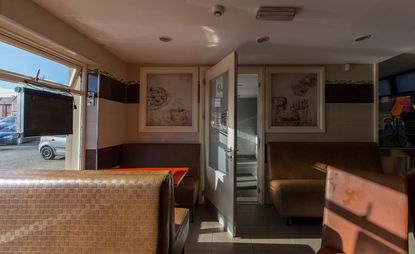
At the 16th Venice Architecture Biennale, Ireland will use its pavilion to look closely at the country. Not at Dublin, where a growing tech hub hosts the headquarters of Google, Facebook and Twitter, and not at its national state recently thrust into headlines and conversations across the UK in the face of Brexit. Instead, the pavilion has set up shop in the market squares of declining rural towns taking a refreshingly useful and non-conceptual approach to a problem, and putting in the work to find out how it might be solved.
Titled ‘Free market’, in response to ‘Freespace’ the main theme chosen by Yvonne Farrell and Shelley McNamara of Grafton Architects, the Irish Pavilion explores the typology of the market square through ten case-study towns across Ireland. Once a place for exchange and congregation, the market square has fallen into a period of decline due to the changing economy, the influx of cars, supermarket life and technological isolation.
Without critique, the exhibition charts historic data, documents contemporary life with photography and gets out onto the streets recording sounds and talking to people to build unique portraits of each town.
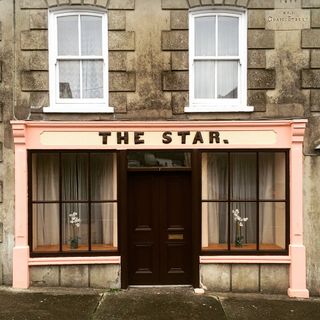
The Star in Roscarbery, County Cork. @our.type
The exhibition is driven by a collective of six curators – five from Ireland and one from the Netherlands – who banded together across common interests in urban life, design and research. They all knew each other somehow through different networks and connections: Laurence Lord and Orla Murphy teach together at the School of Architecture, Planning and Environmental Policy in University College Dublin. Lord also works with Tara Kennedy and Jeffrey Bolhuis at the Cork Centre for Architectural Education. Kennedy is a co-founder with Jo Anne Butler at Culturstruction, their collaborative architecture and design practice – and Miriam Delaney lectures at the Dublin School of Architecture, Dublin Institute of Technology, is connected in another way and seems to know everyone, somehow.
While the down-to-earth group bonded over common ground, they are each located in different parts of Ireland – which allowed the exhibition to gain its wide, yet detailed reach across the country. Instead of a ‘too many cooks moment’, it seems that group-thinking, breadth of skills and intellectual manpower has proved a productive combination.
The curators want to bring the experience of the Irish market place to Venice. It’s a post-modern idea that, in the midst of a Biennale buzzing with sustainable models and utopian ideals brings the international audience back down to reality, to the architecture and design that effects a majority on a daily basis – one in three people in Ireland live in a town after all. In terms of the UK and Brexit, architects and thinkers focussing on small town communities and rural problems is exactly what we need, perhaps other European countries can relate and avoid a similar crisis.
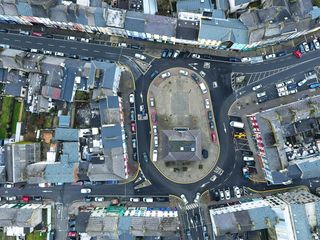
Kilrush town centre in County Clare.
‘Free market’ aims to capture the sensation of being in a market square in Ireland, all inspired by the work of fiction writers, artists, poets and playwrights, the people who have lived and experienced life there and three commissioned soundscapes will be broadcast over the Free Market Radio.
Yet, the pavilion isn’t without future vision. The exhibition positions the market place as a site full of potential, a place of social, political and cultural exchange, central to community cohesion. Proposals for the spaces drawn up by designers and planners, as well as ideas from theorists, critics, policy makers, architects and planners will all meet at the pavilion. A free copy of the Free Market News brings together nearly 40 contributors who lay down ideas into print and bring in wider debates.
On the pavilion’s return to Ireland, the exhibition will journey back from whence it came, to market. It will set up in new formations with a temporary structure that will redesign itself in each context, continuing to grow, gathering and developing its breadth, experience and knowledge.
See all the latest news and stories from Venice Architecture Biennale here
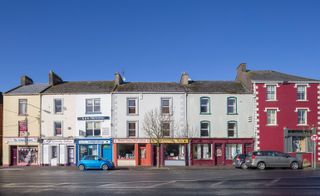
Participant Towns include: Athenry, County Galway; Ballinrobe, County Mayo; Ballyshannon, County Donegal; Bunclody, County Wexford; Castleblayney, County Monaghan; Kilmallock, County Limerick; Kilrush, County Clare; Macroom, County Cork; Mountmellick, County Laois; Templemore, County Tipperary. Pictured here, a photograph from Kilrush Town. © Free Market
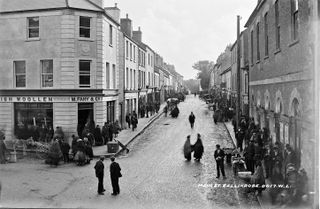
Kilrush Square in County Clare.
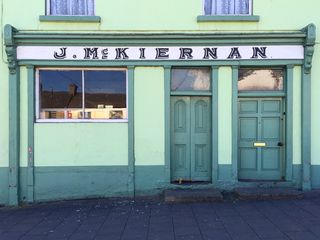
J. Mc Kiernan’s in Kingscourt, County Cavan. @our.type
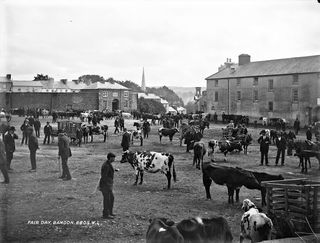
Bandon in County Cork.

Kilrush Town. © Free Market
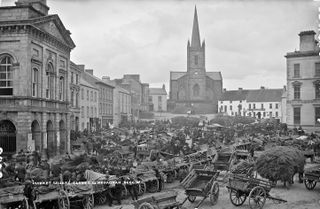
Monaghan in Clones County.
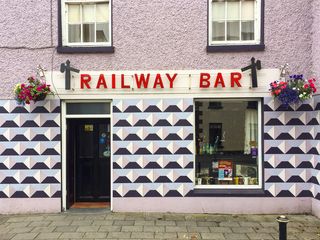
Railway Bar in Banagher in County Offaly. @our.type
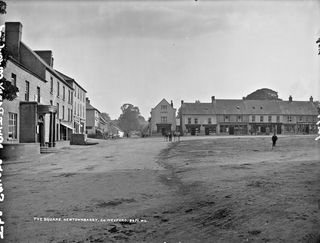
Newtownbarry Wexford (now Bunclody).
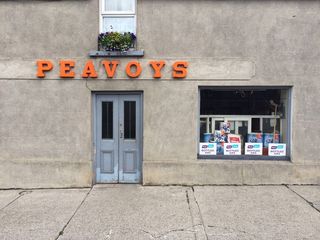
Peavoys in Kinnitty, County Offaly. @our.type
INFORMATION
For more information, visit the Irish pavilion at Venice Architecture Biennale Free market website
Wallpaper* Newsletter
Receive our daily digest of inspiration, escapism and design stories from around the world direct to your inbox
Harriet Thorpe is a writer, journalist and editor covering architecture, design and culture, with particular interest in sustainability, 20th-century architecture and community. After studying History of Art at the School of Oriental and African Studies (SOAS) and Journalism at City University in London, she developed her interest in architecture working at Wallpaper* magazine and today contributes to Wallpaper*, The World of Interiors and Icon magazine, amongst other titles. She is author of The Sustainable City (2022, Hoxton Mini Press), a book about sustainable architecture in London, and the Modern Cambridge Map (2023, Blue Crow Media), a map of 20th-century architecture in Cambridge, the city where she grew up.
-
 Gucci’s ‘Design Ancora’ reimagines furniture classics in rich red
Gucci’s ‘Design Ancora’ reimagines furniture classics in rich redGucci launches new editions of Italian design icons in an alluring deep red, showcased during Milan Design Week 2024
By Simon Mills Published
-
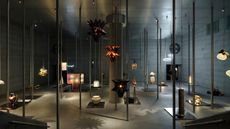 Loewe’s Jonathan Anderson drafts artists to create 24 extraordinary lamps at Milan Design Week 2024
Loewe’s Jonathan Anderson drafts artists to create 24 extraordinary lamps at Milan Design Week 2024Loewe creative director Jonathan Anderson commissioned international artists and artisans to explore ‘illumination within the house’ with a series of lamps and lighting installations, shown at a group exhibition at Milan Design Week 2024
By Scarlett Conlon Published
-
 What are polynucleotides? Trying the skin injectable made from salmon sperm
What are polynucleotides? Trying the skin injectable made from salmon spermPolynucleotides are the latest in skin injectables, containing DNA derived from the gonads of salmon. Wallpaper* Beauty & Grooming Editor Hannah Tindle tries them to discover exactly how they work
By Hannah Tindle Published
-
 Giovanni Michelucci’s dramatic concrete church in the Italian Dolomites
Giovanni Michelucci’s dramatic concrete church in the Italian DolomitesGiovanni Michelucci’s concrete Church of Santa Maria Immacolata in the Italian Dolomites is a reverently uplifting memorial to the victims of a local disaster
By Jonathan Glancey Published
-
 Milan’s 10 Corso Como revamp nods to the concept store’s industrial character
Milan’s 10 Corso Como revamp nods to the concept store’s industrial characterMilanese concept store 10 Corso Como unveils its new look by 2050+, a stripped-back design that nods to its 20th-century character
By Ellie Stathaki Published
-
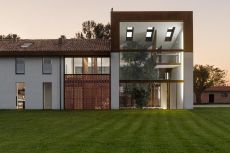 Carlo Ratti announced curator of Venice Architecture Biennale 2025
Carlo Ratti announced curator of Venice Architecture Biennale 2025Carlo Ratti has been revealed as the Director of the Architecture Department at the Venice Architecture Biennale 2025, with the specific task of curating the 19th International Architecture Exhibition
By Ellie Stathaki Published
-
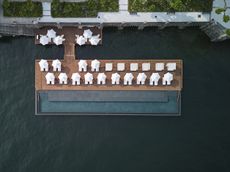 Floating infinity pool by Herzog & De Meuron at Lake Como is largest of its kind
Floating infinity pool by Herzog & De Meuron at Lake Como is largest of its kindHerzog & de Meuron creates the largest floating infinity pool in the world for Mandarin Oriental in Lake Como
By Lauren Ho Published
-
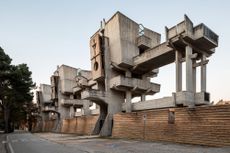 Best of brutalist Italian architecture chronicled in new book
Best of brutalist Italian architecture chronicled in new bookBrutalist Italian architecture enthusiasts and concrete completists will be spoilt for choice by Roberto Conte and Stefano Perego’s pictorial tour
By Jonathan Bell Published
-
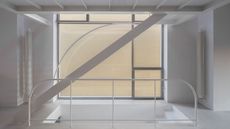 Studio Tropicana, Switzerland and Italy: Wallpaper* Architects’ Directory 2023
Studio Tropicana, Switzerland and Italy: Wallpaper* Architects’ Directory 2023Based in Switzerland and Italy, Studio Tropicana is part of the Wallpaper* Architects’ Directory 2023, our annual round-up of exciting emerging architecture studios
By Ellie Stathaki Published
-
 WeWork Meravigli blends past and present in a 21st-century office space
WeWork Meravigli blends past and present in a 21st-century office spaceWeWork Meravigli launches in Milan, bringing its ornate, historical new home to the 21st century
By Ellie Stathaki Published
-
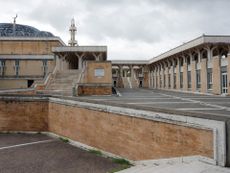 In memoriam: Paolo Portoghesi (1931 - 2023)
In memoriam: Paolo Portoghesi (1931 - 2023)Postmodernist Italian architect Paolo Portoghesi has died; writer David Plaisant celebrates his life and legacy, recalling his visit to Calcata for a feature in the Wallpaper* April 2021 issue
By David Plaisant Published